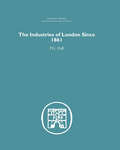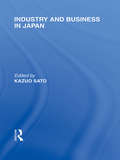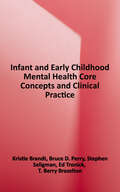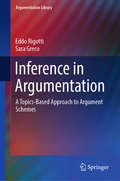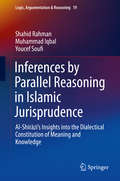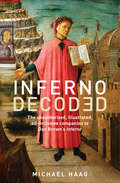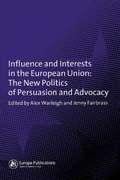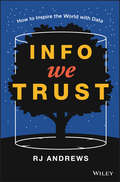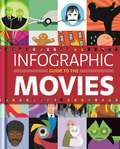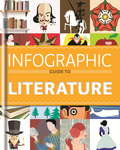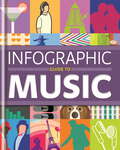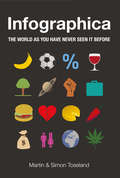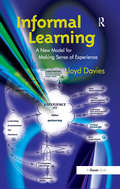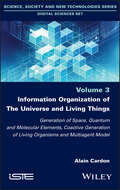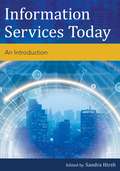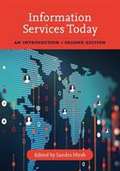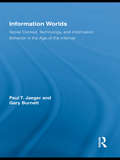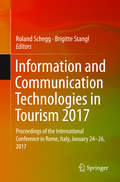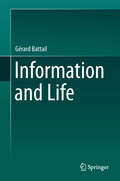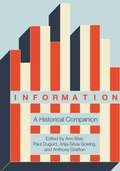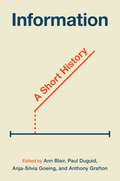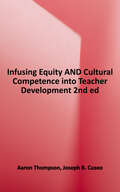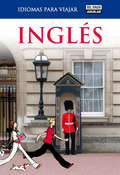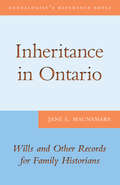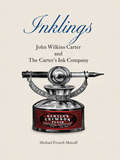- Table View
- List View
Industries of London Since 1861
by P.G. HallFirst Published in 2005. Routledge is an imprint of Taylor & Francis, an informa company.
Industry and Business in Japan (Routledge Library Editions: Japan)
by Kazuo SatoThis volume analyzes Japan’s industrial organization both from a historical perspective and by looking in details at specific industries such as iron, steel and the automotive industry. Big business, business groups and industrial policy are also discussed. The volume also provides a survey of the literature in Japanese which will help the reader in search of original sources.
Infant and Early Childhood Mental Health: Core Concepts and Clinical Practice
by Bruce D. Perry Ed Tronick Stephen Seligman Kristie BrandtDrawing from and grounded in their long-standing involvement in pioneering work on infant-parent mental health, the editors of Infant and Early Childhood Mental Health: Core Concepts and Clinical Practice have assembled a comprehensive, theoretically insightful, and clinically useful volume for psychiatrists, psychologists, nurses, pediatricians, social workers, psychotherapists, and all other providers serving children and families from pregnancy through age 5. In 20 engaging chapters by renowned practitioners and researchers in the field, the book covers concepts from the nature of infant emotional and brain development to the practice of neurologically and relationally based therapies and explores topics from child trauma to autism spectrum disorders. The authors weave related core concepts throughout multiple chapters to parallel the multifaceted, multilayered, and interwoven complexity that resembles both the real lives of families and the real work of clinicians. Beautifully written, thought-provoking, and rigorous, Infant and Early Childhood Mental Health: Core Concepts and Clinical Practice will serve as the benchmark for the field for both researchers and practitioners for years to come.
Inference in Argumentation: A Topics-based Approach To Argument Schemes (Argumentation Library #34)
by Eddo Rigotti Sara GrecoThis book investigates the role of inference in argumentation, considering how arguments support standpoints on the basis of different loci. The authors propose and illustrate a model for the analysis of the standpoint-argument connection, called Argumentum Model of Topics (AMT). A prominent feature of the AMT is that it distinguishes, within each and every single argumentation, between an inferential-procedural component, on which the reasoning process is based; and a material-contextual component, which anchors the argument in the interlocutors’ cultural and factual common ground. The AMT explains how these components differ and how they are intertwined within each single argument. This model is introduced in Part II of the book, following a careful reconstruction of the enormously rich tradition of studies on inference in argumentation, from the antiquity to contemporary authors, without neglecting medieval and post-medieval contributions. The AMT is a contemporary model grounded in a dialogue with such tradition, whose crucial aspects are illuminated in this book.
Inferences by Parallel Reasoning in Islamic Jurisprudence: Al-Shīrāzī’s Insights into the Dialectical Constitution of Meaning and Knowledge (Logic, Argumentation & Reasoning #19)
by Shahid Rahman Muhammad Iqbal Youcef SoufiThis monograph proposes a new (dialogical) way of studying the different forms of correlational inference, known in the Islamic jurisprudence as qiyās. According to the authors’ view, qiyās represents an innovative and sophisticated form of dialectical reasoning that not only provides new epistemological insights into legal argumentation in general (including legal reasoning in Common and Civil Law) but also furnishes a fine-grained pattern for parallel reasoning which can be deployed in a wide range of problem-solving contexts and does not seem to reduce to the standard forms of analogical reasoning studied in contemporary philosophy of science and argumentation theory. After an overview of the emergence of qiyās and of the work of al-Shīrāzī penned by Soufi Youcef, the authors discuss al-Shīrāzī’s classification of correlational inferences of the occasioning factor (qiyās al-'illa). The second part of the volume deliberates on the system of correlational inferences by indication and resemblance (qiyās al-dalāla, qiyās al-shabah). The third part develops the main theoretical background of the authors’ work, namely, the dialogical approach to Martin-Löf's Constructive Type Theory. The authors present this in a general form and independently of adaptations deployed in parts I and II. Part III also includes an appendix on the relevant notions of Constructive Type Theory, which has been extracted from an overview written by Ansten Klev. The book concludes with some brief remarks on contemporary approaches to analogy in Common and Civil Law and also to parallel reasoning in general.
Inferno Decoded
by Michael HaagAn all-inclusive guide to key concepts and details about Dan Brown's novel Inferno--featuring black-and-white illustrations. Go deep into the provocative and always compelling world of Dan Brown's novel, Inferno. Delivering crucial background on the characters, codes, symbols, secrets, and setting of the novel, Inferno Decoded also offers a wealth of fascinating details about the historical and cultural background and the questions it raises. As in Michael Haag's previous bestseller, The Rough Guide to The Da Vinci Code, the author illuminates the life and work of Dante Alighieri and the world of medieval Florence. Also included: an overview of Dante and his work, along with the other themes of Brown's thriller; a guide to its sources and Tuscan locations; and a look back at the earlier career of Brown's hero, Harvard Professor of Symbology, Robert Langdon.
Influence and Interests in the European Union: The New Politics of Persuasion and Advocacy
by Jenny Fairbrass Edited by Alex WarleighClearly discusses the impact and uses of interest representation in the development of the EU system.* Examines the complexities of representation at EU level, a vital issue for potential lobbyists and interest groups* Charts new trends and issues such as enlargement, Europeanization and Central and Eastern Europe* Contributions by acknowledged experts with a proven track record of research and publication in this field, including seven current and past practitioners of EU politics with experience as lobbyists from either institutional, NGO or corporate perspectives* Places interest representation in its historical and theoretical context.
Info We Trust: How to Inspire the World with Data
by Rj AndrewsHow do we create new ways of looking at the world? Join award-winning data storyteller RJ Andrews as he pushes beyond the usual how-to, and takes you on an adventure into the rich art of informing. Creating Info We Trust is a craft that puts the world into forms that are strong and true. It begins with maps, diagrams, and charts — but must push further than dry defaults to be truly effective. How do we attract attention? How can we offer audiences valuable experiences worth their time? How can we help people access complexity? Dark and mysterious, but full of potential, data is the raw material from which new understanding can emerge. Become a hero of the information age as you learn how to dip into the chaos of data and emerge with new understanding that can entertain, improve, and inspire. Whether you call the craft data storytelling, data visualization, data journalism, dashboard design, or infographic creation — what matters is that you are courageously confronting the chaos of it all in order to improve how people see the world. Info We Trust is written for everyone who straddles the domains of data and people: data visualization professionals, analysts, and all who are enthusiastic for seeing the world in new ways. This book draws from the entirety of human experience, quantitative and poetic. It teaches advanced techniques, such as visual metaphor and data transformations, in order to create more human presentations of data. It also shows how we can learn from print advertising, engineering, museum curation, and mythology archetypes. This human-centered approach works with machines to design information for people. Advance your understanding beyond by learning from a broad tradition of putting things “in formation” to create new and wonderful ways of opening our eyes to the world. Info We Trust takes a thoroughly original point of attack on the art of informing. It builds on decades of best practices and adds the creative enthusiasm of a world-class data storyteller. Info We Trust is lavishly illustrated with hundreds of original compositions designed to illuminate the craft, delight the reader, and inspire a generation of data storytellers.
Infographic Guide To The Movies (Infographic Guides)
by Karen Krizanovich"Naturally, there are all the types of information you'd expect to find in a book like this... but there's a whole lot more than that on offer here." - Starburst Magazine100 stunning, ingenious and absorbing movie infographics!Infographic Guide to Movies presents unique, witty and surprising facts about every film genre, from blockbuster, rom-com, horror, crime, sci-fi and action, to noir, zombie, nouvelle vague, slasher, erotica, world cinema and much, much more. Mixing cinematic fact with legend, it features infamous and often ludicrous tales of Hollywood, Bollywood, European cinema, underground and indie filmmaking.More than just a book of words, with graphs, Venn diagrams and charts, this book provides a unique overview of the movie world, boasting over 100 original artworks and illustrations and at-a-glance facts to amaze and astound readers-such as whether movies with a naked Helen Mirren or a naked Zach Galifiankis are likely to be more successful in Albania. There are graphics on every major movie genre and market in the world.Discover...Where in the world you're most likely to come across zombies.What the ultimate leading man would look like.Which actor was the best Bond.Who would win a fight between Rocky and Rambo.Judd Apatow's secret formula. How to kill Bruce Willis.How to get from Thomas Hardy to Tom Hardy.How much rom in a com makes the perfect rom-com. And so much more!
Infographic Guide to Literature (Infographic Guides)
by Joanna Eliot100 stunning, ingenious and absorbing infographics all about literature, featuring your favourite books and authors!Infographic Guide to Literature presents unique, witty and surprising facts about literature, from Shakespeare and Austen to Nabakov and Orwell, to George R. R. Martin and E. L. James. Fascinating stats and all the facts on your favourite writers, poets and playwrights, it features infamous tales from behind the scenes of the literary world.This book celebrates the power of words with graphs, Venn diagrams and charts, this book provides a unique overview of your favourite figures in literature, boasting over 100 original artworks and illustrations and at-a-glance facts to amaze and astound readers.Brilliant infographics include:War Words: The conflicts and the writers who fought, wrote and perished in them across timeline and geography 100 Years of Family: The family tree of Garcia Marquez's huge novel tracedShakespeare Eternal: Seven key plays and their rewrite in different genres, including crime, chick-lit, thriller, comedy, Adult, YA and literaryBanned Books: timeline and location of titles that have and continue to be banned in different countries
Infographic Guide to Music (Infographic Guides)
by Graham BettsOver 80 stunning, ingenious and absorbing music infographics! Infographic Guide to Music presents unique, witty and surprising facts about every music genre, from pop, rock, indie, house, dance, electronic, rap, country and classical. Mixing musical stats with facts on all your favourite leading legends, it features infamous and often ludicrous tales of the music business.More than just a book of words, with graphs, Venn diagrams and charts, this book provides a unique overview of the music world, boasting over 100 original artworks and illustrations and at-a-glance facts to amaze and astound readers.
Infographica
by Simon Toseland Martin ToselandInfographica collects intriguing data from across the planet--for instance, the average lifespan of people living on each continent, the relative durations of the world's unmanned space probes, or the bite strength of the world's most dangerous predators--and presents it in stylish, inventive, and original infographics. Quirky, irreverent, and visually appealing, this book is a must-have reference for anyone wishing to keep informed, as well as a primer on information design from the writing and design team of Martin and Simon Toseland.From the Trade Paperback edition.
Informal Learning: A New Model for Making Sense of Experience
by Lloyd DaviesIn much of the developed world, learning is synonymous with the formal, structured processes that involve teachers, lecturers or trainers. Yet it is experience that is by far the most influential teacher that any of us will have, from the very first moment we are born. Lloyd Davies puts forward a new way of looking at experiential learning; a model that identifies the elements, and points to some of the dynamics. The book highlights the characteristics that are common to the learning process, explains how we learn from experience and why each of us sees our experiences in different ways and, consequently, learns different lessons. It provides advice and guidance on how each of the various elements of the process can be used to greater effect, both for individual and group learning, as well as in mentoring and counselling. The book, which is based on the author's research, is written for a wide readership that includes both learning practitioners and students. If individuals and the organizations within which they work, as students or as employees, understand the basis on which they learn and can turn the process from a passive to an active one, the implications for their development are profound. Lloyd Davies' model for Informal Learning provides a relevant, flexible and significant tool that can offer a sea-change in the way we all learn.
Information Organization of the Universe and Living Things: Generation of Space, Quantum and Molecular Elements, Coactive Generation of Living Organisms and Multiagent Model
by Alain CardonThe universe is considered an expansive informational field subjected to a general organizational law. The organization of the deployment results in the emergence of an autonomous organization of spatial and material elements endowed with permanence, which are generated on an informational substratum where an organizational law is exercised at all scales. The initial action of a generating informational element produces a quantity of basic informational elements that multiply to form other informational elements that will either be neutral, constituting the basic spatial elements, or active, forming quantum elements.The neutral basic elements will form the space by a continuous aggregation and will represent the substrate of the informational links, allowing the active informational elements to communicate, in order to aggregate and organize themselves.Every active element is immersed in an informational envelope, allowing it to continue its organization through constructive communications. The organizational law engages the active quantum elements to aggregate and produce new and more complex quantum elements, then molecular elements, massive elements, suns and planets. Gravity will then be the force of attraction exerted by the informational envelopes of the aggregates depending on their mass, to develop them by acquisition of new aggregates.The organizational communication of the informational envelopes of all of the physical material elements on Earth will enable the organization of living things, with reproduction managed by communications between the informational envelopes of the elements, realizing a continuous and powerful evolution.
Information Services Today: An Introduction
by Sandra HirshThis essential overview of what it means to be a library and information professional today provides a broad overview of the transformation of libraries as information organizations, why these organizations are more important today than ever before, the technological influence on how we provide information resources and services in today’s digital and global environment, and the various career opportunities available for information professionals.
Information Services Today: An Introduction
by Sandra HirshThis essential overview of what it means to be a library and information professional today provides a broad overview of the transformation of libraries as information organizations, why these organizations are more important today than ever before, the technological influence on how we provide information resources and services in today’s digital and global environment, and the various career opportunities available for information professionals. The book begins with a historical overview of libraries and their transformation as information and technology hubs within their communities. It also covers the various specializations within the field emphasizing the exciting yet complex roles and opportunities for information professionals. With that foundation in place, it presents how libraries serve different kinds of communities, highlighting the unique needs of users across all ages and how libraries fulfill those needs through a variety of services, and addresses key issues facing information organizations as they meet user needs in the Digital Age. The book then concludes with career management strategies to guide library and information science professionals in building not only vibrant careers but vibrant information organizations for the future as well.
Information Worlds: Behavior, Technology, and Social Context in the Age of the Internet (Routledge Studies in Library and Information Science)
by Paul T. Jaeger Gary BurnettThe authors present a multi-level theory of "Information Worlds" to investigate the ways in which information creates the social worlds of people. Building upon the foundational works of Library and Information Studies (LIS) scholar and theorist Elfreda Chatman and philosopher Jurgen Habermas, as well as from theory and research from a wide range of other fields, the theory of information worlds can serve as a theoretical driver both in LIS studies and across other disciplines that study information issues, enriching and expanding our understanding of the multi-layered role of information in society. Testing their theory through application to a variety of real-world issues, Burnett and Jaeger tackle the topics of libraries and information provision, the value assigned to information by differing social groups, information access and exchange, international information policies, the role of information in democracy, and technological change. Information Worlds provides a framework for empirical investigations into the fascinating and very real social dimensions of information.
Information and Communication Technologies in Tourism 2017
by Roland Schegg Brigitte StanglThis book presents state-of-the-art research into the application of information and communication technologies to travel and tourism. The range of topics covered is broad, encompassing digital marketing and social media, mobile computing and web design, semantic technologies and recommender systems, augmented and virtual reality, electronic distribution and online travel reviews, MOOC and eLearning, eGovernment, and the sharing economy. There is a particular focus on the development of digital strategies, the impact of big data, and the digital economy. In addition to the description of research advances and innovative ideas, readers will find a number of informative industrial case studies. The contents of the book are based on the 2017 ENTER eTourism conference, held in Rome. The volume will be of interest to all academics and practitioners who wish to keep abreast of the latest developments in eTourism.
Information and Life
by Gérard BattailCommunication, one of the most important functions of life, occurs at any spatial scale from the molecular one up to that of populations and ecosystems, and any time scale from that of fast chemical reactions up to that of geological ages. Information theory, a mathematical science of communication initiated by Shannon in 1948, has been very successful in engineering, but biologists ignore it. This book aims at bridging this gap. It proposes an abstract definition of information based on the engineers' experience which makes it usable in life sciences. It expounds information theory and error-correcting codes, its by-products, as simply as possible. Then, the fundamental biological problem of heredity is examined. It is shown that biology does not adequately account for the conservation of genomes during geological ages, which can be understood only if it is assumed that genomes are made resilient to casual errors by proper coding. Moreover, the good conservation of very old parts of genomes, like the HOX genes, implies that the assumed genomic codes have a nested structure which makes an information the more resilient to errors, the older it is. The consequences that information theory draws from these hypotheses meet very basic but yet unexplained biological facts, e.g., the existence of successive generations, that of discrete species and the trend of evolution towards complexity. Being necessarily inscribed on physical media, information appears as a bridge between the abstract and the concrete. Recording, communicating and using information exclusively occur in the living world. Information is thus coextensive with life and delineates the border between the living and the inanimate.
Information: A Historical Companion
by Ann Blair, et al.A landmark history that traces the creation, management, and sharing of information through six centuriesThanks to modern technological advances, we now enjoy seemingly unlimited access to information. Yet how did information become so central to our everyday lives, and how did its processing and storage make our data-driven era possible? This volume is the first to consider these questions in comprehensive detail, tracing the global emergence of information practices, technologies, and more, from the premodern era to the present. With entries spanning archivists to algorithms and scribes to surveilling, this is the ultimate reference on how information has shaped and been shaped by societies.Written by an international team of experts, the book's inspired and original long- and short-form contributions reconstruct the rise of human approaches to creating, managing, and sharing facts and knowledge. Thirteen full-length chapters discuss the role of information in pivotal epochs and regions, with chief emphasis on Europe and North America, but also substantive treatment of other parts of the world as well as current global interconnections. More than 100 alphabetical entries follow, focusing on specific tools, methods, and concepts—from ancient coins to the office memo, and censorship to plagiarism. The result is a wide-ranging, deeply immersive collection that will appeal to anyone drawn to the story behind our modern mania for an informed existence.Tells the story of information’s rise from 1450 through to todayCovers a range of eras and regions, including the medieval Islamic world, late imperial East Asia, early modern and modern Europe, and modern North AmericaIncludes 100 concise articles on wide-ranging topics:Concepts: data, intellectual property, privacyFormats and genres: books, databases, maps, newspapers, scrolls and rolls, social mediaPeople: archivists, diplomats and spies, readers, secretaries, teachersPractices: censorship, forecasting, learning, political reporting, translatingProcesses: digitization, quantification, storage and searchSystems: bureaucracy, platforms, telecommunicationsTechnologies: cameras, computers, lithographyProvides an informative glossary, suggested further reading (a short bibliography accompanies each entry), and a detailed indexWritten by an international team of notable contributors, including Jeremy Adelman, Lorraine Daston, Devin Fitzgerald, John-Paul Ghobrial, Lisa Gitelman, Earle Havens, Randolph C. Head, Niv Horesh, Sarah Igo, Richard R. John, Lauren Kassell, Pamela Long, Erin McGuirl, David McKitterick, Elias Muhanna, Thomas S. Mullaney, Carla Nappi, Craig Robertson, Daniel Rosenberg, Neil Safier, Haun Saussy, Will Slauter, Jacob Soll, Heidi Tworek, Siva Vaidhyanathan, Alexandra Walsham, and many more.
Information: A Short History
by Ann Blair, Paul Duguid, Anja-Silvia Goeing, and Anthony GraftonAn essential guide to the ways information has shaped and been shaped by societiesThanks to recent advances, we now enjoy seemingly unlimited access to information. How did information become so central to our everyday lives? This book traces the global emergence of information practices and technologies across pivotal epochs and regions, providing invaluable historical perspectives on the ways information has shaped and been shaped by societies. Featuring the core articles from the ultimate reference book Information: A Historical Companion, this short history will appeal to anyone seeking to understand our modern mania for an informed existence. The book:Tells the story of information&’s rise from the premodern era to today, exploring how diverse cultures have created, managed, and shared facts and knowledgeTakes readers from the medieval Islamic world to late imperial East Asia, and from early modern and modern Europe to contemporary North AmericaCovers a broad range of topics, such as networks, bureaucracy, publicity, propaganda, censorship, privacy, intellectual property, digitization, telecommunications, storage and search, and much moreIncludes a new introduction, suggested further readings, and a glossary of key termsBrings together an international team of experts, including Jeremy Adelman, Devin Fitzgerald, John-Paul Ghobrial, Lisa Gitelman, Randolph C. Head, Richard R. John, Elias Muhanna, Thomas S. Mullaney, Carla Nappi, Craig Robertson, Daniel Rosenberg, Will Slauter, and Heidi Tworek
Infusing Equity and Cultural Competence into Teacher Development
by Aaron Thompson Joseph B. CuseoAs teachers face increasing diversity within their classrooms in learning styles, race, linguistics, and culture, the academic rigor needed to successfully enter college or a career will require them to evolve in order for all students to succeed. <p><p> Infusing Diversity & Cultural Competence into Teacher Education provides educators and future educators with pathways for achieving cultural competence. Placing this crucial competence in the teacher’s toolbox will increase their opportunity and the capacity of ensuring success in and out of the classroom. The tools presented in this book assist the teacher in making gains in closing achievement gaps, building opportunity for all students, building strong pedagogical skills, enhancing curriculum for their diverse students, and constantly assessing all of these areas to ensure they are maintaining their status as the largest contributor to students’ success. <p><p> Infusing Diversity & Cultural Competence into Teacher Education: <p> Defines, describes, and explains why diversity should be part of the formal education process <p>Illustrates student, family, school, and community roles in the learning process. <p>Describes how to incorporate intercultural communication and relationship building skills into curriculum.
Inglés (Idiomas para viajar #Volumen)
by El País-AguilarEl primero de los títulos renovados es el best-seller de esta serie, INGLÉS PARA VIAJAR..., cuyo número de páginas crece y que ofrece ahora unos contenidos mucho más amplios y completos. Recoge todo lo que se necesita para desenvolverse en inglés durante el viaje: una guía de pronunciación inglesa, un resumen gramatical y un manual de inglés básico como introducción a todos los bloques temáticos pensados para resolver situaciones según avanza el viaje (llegada, desplazamientos, alojamiento, restaurantes, ocio, compras, salud, emergencias...). Todos los capítulos tienen, además de introducciones prácticas del país, un vocabulario imprescindible y expresiones habituales, con sus correspondientes transcripciones. La guía concluye con un minidiccionario español-inglés, que contiene todas las palabras de uso habitual en la comunicación diaria.
Inheritance in Ontario: Wills and Other Records for Family Historians
by Jane E. MacnamaraA guide to researching your family’s inheritance history in Ontario. Whether your ancestor left hundreds of acres of land, money, or a few modest belongings, the records created when those legacies were distributed can provide valuable clues to family connections, relationships, and just how your ancestors lived.Inheritance in Ontario will help you determine whether your relative’s will was proved in the Court of Probate, surrogate courts, or another court, and navigate the finding aids to locate surviving estate files and other complementary records at the Archives of Ontario, local courthouse or archives, or through FamilySearch.org. Not every Ontario estate was handled by a court, however, and land records, newspapers, and manuscript collections can also help you discover "who got what."
Inklings: John Wilkins Carter And The Carter's Ink Company
by Michael French MetcalfInklings: John Wilkins Carter and The Carter’s Ink Company is the story of an old New England family and the companies they created and operated—beginning with Timothy Carter’s Old Corner Bookstore in downtown Boston and spanning a 150-year period. The focus of the book is The Carter’s Ink Company, which originated in Boston after the Civil War and prospered until 1976. The story also encompasses James Carter’s paper business in Boston and Nashua, NH. An in-depth look into the Carter’s family is woven throughout and shows how their devout faith served as the backbone for their commitments to business, their communities, and to their fellow mankind.
